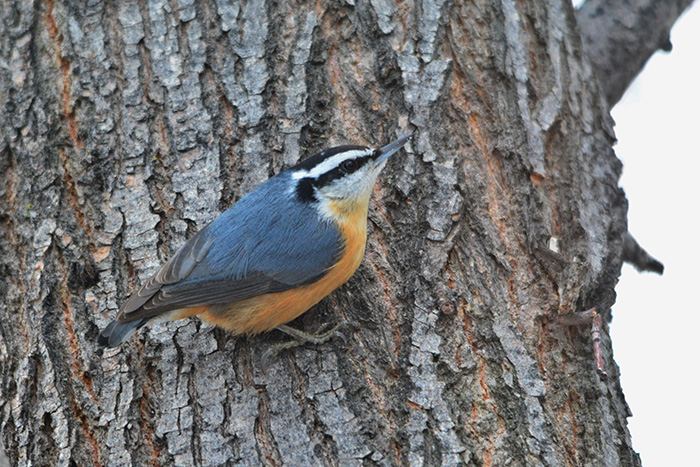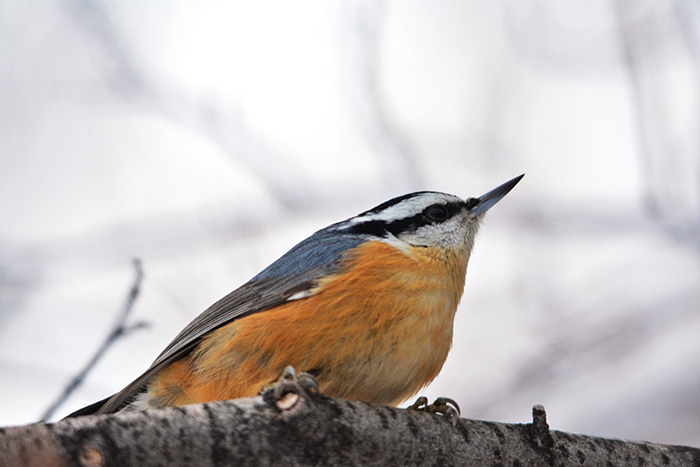SCHIESS: Red-breasted Nuthatches liven up area cemetaries
Published at | Updated at
The mature evergreen trees at Burton Cemetery and Sugar City Cemetery near Rexburg are “alive with the sounds of music.” Mountain and Black-capped Chickadees, Steller’s Jays, Pine siskins and Goldfinch, and other winter residents are all part of the chorus. The habitat provided by area cemeteries has become winter homes for birds that summer in the great forests of Southeastern Idaho.
One of the most interesting songs is a nasal imitation of a toy horn being blown throughout the closed canopy of spruce and fir trees. The Red-breasted Nuthatch, part of the winter residents of these mature trees, announces the warming temperatures of the winter sun during the February thaw.
A quiet slow approach with an occasional “pishing” after you are positioned under a huge spruce can bring some of these aerobic masked birds close to you. With a white line sandwiched between a black cap and eye line, the Red-breasted nuthatch appears as a masked bandit with a rust colored vest and a slate blue overcoat. They are dressed to the hilt.
Their strong claws and legs allow them to move up, down and sideways along the trunk of evergreens searching for food. Hanging upside down on branches, searching the dark crevices of the bark for stashed seeds is a common behavior.
Nuthatches prefer insects and spiders as food, but with their strong bill will also pry seeds from conifers during the winter to feed on. They also invade bird feeders located near mature confers offering suet and peanut butter. Chickadees are their chief competitor for winter food in populated areas.
As the weather warms, nuthatches may migrate back to the heavy forest areas for nesting.
These small four-inch birds are highly competitive and very aggressive during nesting.
As cavity nesters, they may excavate their own holes, use abandoned woodpecker nests or even use natural cavities for raising their young. To discourage other competitors from bothering their nest they apply conifer resin to the entrance of the nest. This resin may be transported with their beak or they may use a piece of bark to scoop up the liquid and apply it. Females have the job of coating the inside while the male works on the outside. Not unlike some human families – the inside of the home is the female responsibility while the less intricate decorating on the outside is left up to the male.
To keep from getting the resin on themselves, nuthatches will not land on the edge of the hole, but will dive through the entrance while in flight.
Once the young are raised, the nuthatches become less aggressive, often feeding and socializing with other species of birds.
Migration is usually short for them. They may migrate out of the mountain areas as early as July, but only to find a large food supply for the winter.
With many of the old cemeteries of the area containing large spruce, fir and pine, these peaceful resting places for the dead become the winter practice ground for singing birds including the shy Red-breasted Nuthatch.
A quiet reverent stroll through one of these cemeteries may be as entertaining as a great symphony or a popular rock concert. That depends on the performers or the uninvited audience.
Living the Wild Life is brought to you by The Healing Sanctuary.





